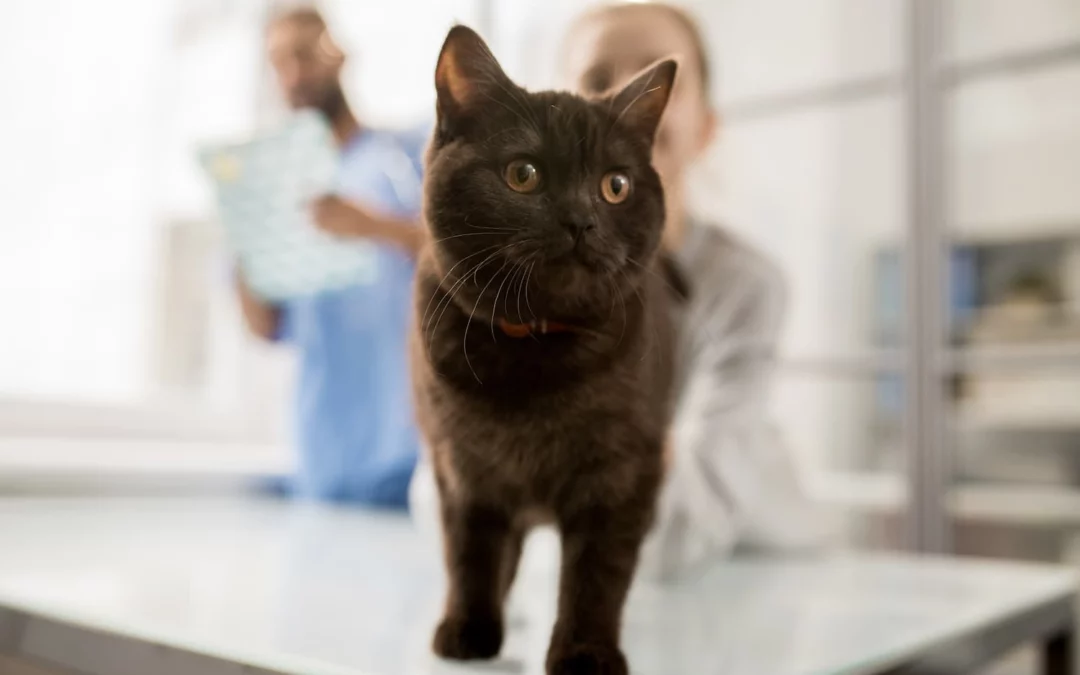If you have both a cat and a dog at home, you’ve probably noticed they experience the world very differently. While your dog might wag their tail at the leash, ready to jump in the car for their next vet visit, your cat likely vanishes under the bed at the sound of the carrier door. These reactions are more than personality quirks—they’re signs of deeply rooted differences in how cats and dogs live, behave, and need care.
Understanding the unique needs of your cat isn’t just helpful—it’s essential. Cats require veterinary care that’s tailored specifically to them, not just a scaled-down version of what works for dogs. From how they experience stress to how they process nutrients, feline health demands a different approach.
Cats Hide Illness—So Regular Vet Visits Are Critical
Unlike dogs, who often let you know when something’s wrong, cats are instinctively inclined to hide signs of pain or illness. This survival tactic makes it harder for pet parents to detect early symptoms of health issues at home. That’s one of the reasons why cats visit the vet less frequently than dogs—but also why they should visit more regularly, not less.
Routine exams are the best way to detect silent issues like kidney disease, dental problems, or hyperthyroidism—common conditions that often go unnoticed until they’re advanced. Regular blood work, weight monitoring, and physical exams give your veterinarian a chance to catch and manage these conditions before they seriously affect your cat’s quality of life.
If it’s been more than a year since your cat’s last visit, it may be time to schedule a wellness exam. Preventive care isn’t just for dogs—cats benefit equally, if not more.
Stress Sensitivity: Why the Clinic Experience Matters
For cats, the vet visit itself can be a source of stress. Loud dogs in the waiting room, strange smells, car rides—they all add up. While dogs may adapt to these experiences, cats are more likely to become anxious or even fearful.
That’s why feline-friendly care goes beyond medical treatment. Fear Free techniques are used to create a more calming experience. These might include pheromone sprays in the exam room, soft towels for restraint, dimmed lights, and minimal handling when possible. Some cats do best when examined in their carrier or even on the floor, rather than the exam table.
If your cat becomes anxious at the vet, don’t assume it’s just “how they are.” Talk to our veterinary team about ways to make the visit less stressful. A smoother, more comfortable experience can make a world of difference—for both your cat and you.
Nutrition and Lifestyle: What Cats Need That Dogs Don’t
Dogs are omnivores. Cats? They’re obligate carnivores. That means cats need meat-based proteins to get vital nutrients like taurine, arachidonic acid, and vitamin A—nutrients that dogs can make from plant-based sources, but cats cannot.
This distinction is important when choosing pet food. Feeding your cat dog food (even accidentally) over time can lead to nutritional deficiencies and health issues. It’s also why cats tend to prefer wet food—it more closely resembles their natural diet and helps with hydration, especially since many cats don’t drink enough water on their own.
Feeding guidelines, portion control, and even treat options should all reflect your cat’s specific nutritional needs. Don’t assume what’s safe or healthy for your dog applies to your cat too—because it doesn’t.
Parasite and Preventive Care for Cats
Many cat owners believe indoor cats are safe from parasites. Unfortunately, that’s not entirely true. Fleas, ticks, and mosquitoes can enter the home through open windows, on clothing, or hitch a ride on your dog.
Heartworm, for example, is spread through mosquito bites—and cats are not immune. In fact, feline heartworm disease can be harder to diagnose and treat than it is in dogs. That’s why monthly prevention is just as important for cats, whether they live indoors or go outside.
Our veterinarian can recommend cat-safe flea, tick, and heartworm prevention that fits your cat’s lifestyle. You can find trusted, vet-approved options through our online pharmacy, making it easy to stay consistent with prevention at home.
Cat Dental Care Is Often Overlooked—But Just as Important
Dental disease is one of the most common issues seen in adult cats, yet it’s often ignored. Many cat owners don’t regularly check inside their cat’s mouth, and cats rarely show visible signs of oral pain until it’s severe.
Inflamed gums, loose teeth, drooling, or difficulty eating may all point to a dental problem. Infections in the mouth can even spread bacteria to the heart, kidneys, and other organs.
Professional dental cleanings, along with home dental care, help prevent these issues. Cats may need different handling and sedation protocols than dogs, and their dental anatomy makes early detection especially important. If your cat hasn’t had a dental evaluation recently, it’s worth bringing up during their next visit.
Shoreview’s Cat Vets Understand Feline-Specific Health Needs
Providing high-quality veterinary care means respecting the differences between cats and dogs—not treating them the same. Cats deserve their own care protocols, exam routines, and preventive strategies based on what they uniquely need to stay healthy.
Minnesota Veterinary Hospital in Shoreview is proud to offer feline-specific care designed with your cat’s comfort and health in mind. Whether it’s creating a less stressful visit or customizing a wellness plan based on age, breed, and lifestyle, our team is here to support you and your cat at every stage of life.
Give Your Cat the Expert Care They Deserve
Your cat may be quiet about their needs, but they still count on you to advocate for their health. Regular check-ups, stress-free visits, and tailored preventive care are all part of helping your cat live a longer, healthier life.
If you’re in the Shoreview area and looking for compassionate, knowledgeable veterinary care that truly understands cats, we’re here for you. Call Minnesota Veterinary Hospital at (651) 484-3331 or schedule an appointment online today.

